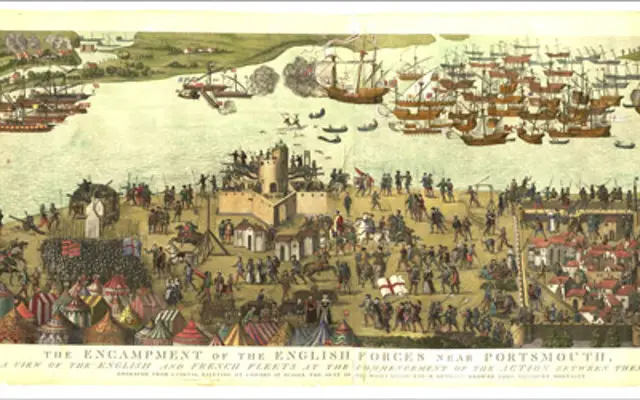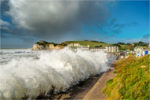Jonathan Dodd’s latest column. Guest opinion articles do not necessarily reflect the views of the publication. Ed
Oh the joy of an empty mind! I’m sitting here looking at the usual empty screen, and a whole load of tumbleweed must be out there somewhere, but there isn’t any wind to blow it through the blankness of the empty space. I just pictured myself lying in the bottom of a punt, on an everlastingly-flat pond, fast asleep under a tipped hat in some warm soft sunniness. Ah Bliss!
I’ve been having a torrid time, and I’m finally recovering from it. I’ve been driving all over the country, entertaining and being entertained by family members, I’ve watched a half-marathon, or rather the first 8,000 runners crossing the finish line, I’ve been to my spiritual home, or rather the Northern outpost of it – Fopp in Manchester, where the ever-decreasing numbers of disc-collectors can still find DVDs and Bly Rays of obscure foreign films at reasonable prices. I spent a very happy hour or two in there, and came out with a bagful, containing lots of films that nobody who has ruffled through them has even heard of one. More Bliss!
A building called Tomorrow, in a road called Blue
We slept in a very comfortable and quiet brand-new room on the top floor of a building called Tomorrow, in an area or road (I could never find out), called Blue, in Salford Quays in Manchester, just behind Media City. It was SO W1A. No, really. Yes. Exactly. Yes. The hotel occupied the top four floors, and I never found out who or what was mostly between us and the ground. But once the super-fast lift wafted us up, the silence enveloped us, and we slept the sleep of the exhausted, and didn’t want to wake up to go and find the half-marathon start, so we missed it. But we did get a good position to wave and shout at the finishers.
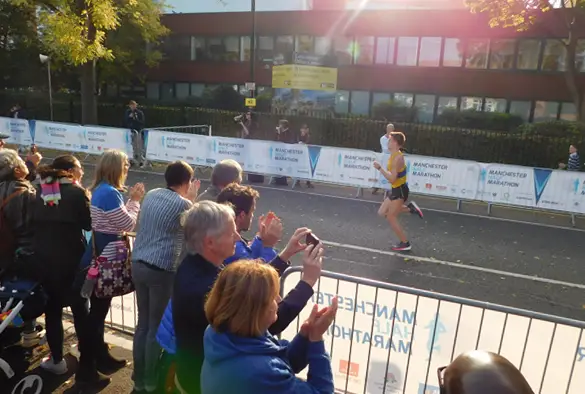
I was amazed when the winner came through. He was running like he was on rails, graceful and lanky, like a gazelle on two legs. He looked like he hadn’t quite broken sweat yet, and he looked like he could do another half-marathon without stopping for a drink. Thirteen miles in one hour and three minutes, and there was a big gap between him and the second finisher. Awesome. Nobody else looked so good. Perhaps winning gives you grace that’s not available to second or third. After that, everyone was dripping or grimacing or hobbling or limping, or their eyes were glazed by pain and suffering, locked onto the approaching line that meant they could stop moving.
My brain is trying to veto it, but other parts of me are worryingly excited
After about ,8000 finishers, along came my stepson Dave, puffing and blowing, but triumphant. A little slower than the winner, but nonetheless, still an achievement. He managed to overtake 1,200 other runners, which is an astonishing number. I remember looking at some of them, thinking they looked a lot less fit and healthy than me, and then I recognised the danger signs. Do I want to get sucked in to the idea of running a half-marathon myself? Could I actually do it? Of course I could! But why would I ever even think about doing it? Etc. My jury is out. My brain is trying to veto it, but other parts of me are worryingly excited. Watch this space, but you’re allowed to blink, because it would take a long time to get ready, given my current running ability.

I reacquainted myself with the horror that is the M6. They’re turning it into a Smart Motorway, which means two years of roadwork misery, which slowed down our arrival in Manchester. On the way home, it turned out that a lorry had flipped somewhere down the line. We were destined to wait for several hours while they cleared the road, but after waiting for thirty minutes to get to the Services, we turned in, and drove the wrong way past three Police cars down a track out of the Car Park, and got away from the motorway, only to find ourselves in B-Road Hell. Cheshire became a sort of Twilight Zone, full of zig-zagging country roads and picturesque villages with weird names, none of them actually seeming to offer the possibility of ever crossing into another county, for mile after mile.
The midnight ferry to Fishbourne almost seemed like civilisation
After that, the midnight ferry to Fishbourne almost seemed like civilisation. Dave came to stay for two days, and spent the first recovering, from the half-marathon and the awful journey. Then we crossed the Solent and visited the Mary Rose. I was astonished that anyone would spend so much time and trouble saving half a ship that sank in ignominious circumstances four and a half centuries ago. Until recently, the salvaged hull has always been obscured by clouds of steam and plastic sheeting, but that work has finished now, and you can go down glass galleries that mirror the internal decks, watching short videos projected on the inner hull, showing who might be doing what.
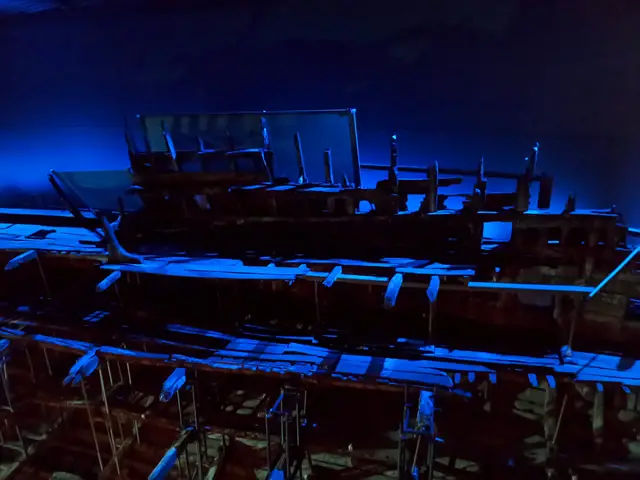
So much stuff has been raised from the seabed and preserved, a lot of it intensely personal. It was quite surprising to find perfectly preserved artefacts like wooden chests or backgammon boards, from which the locks and hinges had completely rusted away. There were wooden bowls, and knife handles, and the sheaths of weapons, but all metals apart from bronze and gold had gone, leaving ghostly impressions where the fittings had originally been fixed.
Some slightly gruesome human remains
We could also see some slightly gruesome human remains, showing that the average height of the dead wasn’t so much shorter than today’s average, but they all seemed to have shocking evidence of some disease or condition that modern life would normally 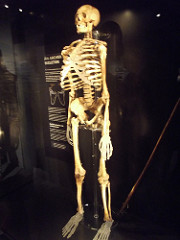 have prevented or treated. Scurvy, rickets, tooth decay, and the archers’ elbows, heavily affected by arthritis, due to the enormous and continuous flexing of those great longbows, many of which rose almost like new from 450 years of mud.
have prevented or treated. Scurvy, rickets, tooth decay, and the archers’ elbows, heavily affected by arthritis, due to the enormous and continuous flexing of those great longbows, many of which rose almost like new from 450 years of mud.
Life must have been extremely tough for those mariners on-board, as the Mary Rose went out to challenge the French fleet that was setting fire to houses on the Isle of Wight, just across from Portsmouth, on that day in 1545, 33 years after the Mary Rose first sailed. Nobody knows how she foundered. The chief culprit seems to be the gun ports, dangerously low in the water, not being closed when the ship lurched, possibly in a strong gust of wind or because of an extra-high wave. There were far more men aboard, mainly soldiers, because of the expected battle, and perhaps their weight contributed to the disaster.
Like the opposite of a fishing net
There was a net strung across the decks, designed to stop boarders from getting inside. This was reinforced with pitch. All those down below were trapped beneath it as they sank to the bottom, watching the surface and the daylight recede, like the opposite of a fishing net. I can’t imagine the horror of that. The ship and its cargo and its dead lay at the bottom of the Solent unmarked and unvisited, until 1836, when a diver with an air hose found a bronze cannon, with its bronze rose that identified it as belonging to the Mary Rose. It wasn’t until the 1970s that maritime archaeologists had the technology and the desire to dive down to survey the wreck, and they were astonished to find that half of it was intact, under the mud that had accumulated over the centuries.
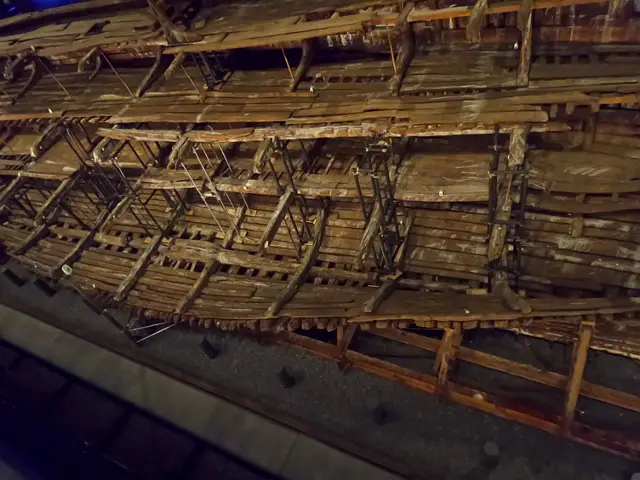
Someone had the magnificent idea to raise her intact, and somehow the finance was amassed, and the technology developed, to bring her up. It was an extraordinary project, fraught with danger and possible catastrophe, but they managed to bring her up in 1982. Then it took over 30 years of constant care to keep the timbers wet, before they disintegrated. A method was developed to pump plastic resin into the wood to keep it stable, and eventually, the huge building was erected and the public started going to see it. And now there’s a whole museum there, filled with the artefacts the divers filtered through the mud at the bottom of the Solent.
The victim of a sad and avoidable accident
I was awed by the whole thing, and I recommend a visit, if you’re passing through Portsmouth. Whether you’re interested or not in history, or ships, or even military history, the sheer effort itself is worth celebrating. I was moved, first of all because of the life and death of so many men, and then by the dedication of so many people over so many years to bring it all back home and honour its memory. And I was moved by the idea that this was a ship that hadn’t conducted itself with extraordinary valour and honour in a great battle, or gained glory, like the ship next to it, the Victory. It had been the victim of a sad and avoidable accident and had gone down ignominiously.
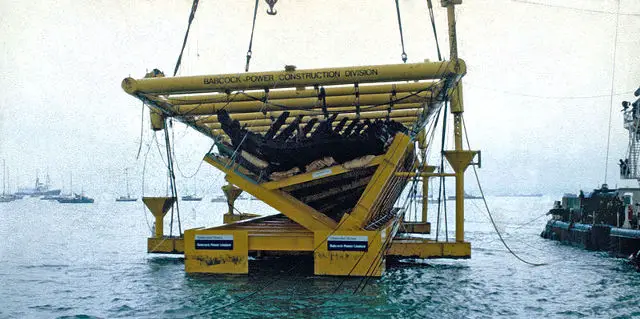
I was also moved by the idea that even though these men had indeed died tragically, they were able to give us so much information about themselves and their way of life, and so many things that they possessed, 450 years after they were officially lost and buried in a muddy grave under the sea.
My own life of health and comfort
In the end, I found myself contrasting my own life of health and comfort, complaining about traffic on the M6, and worrying about the idea of running in a safe race on safe streets, and fretting about getting home late, 300 miles in less than a day. I think that most of those men would have been far more bemused by all this than I was by sleeping in a building called Tomorrow.
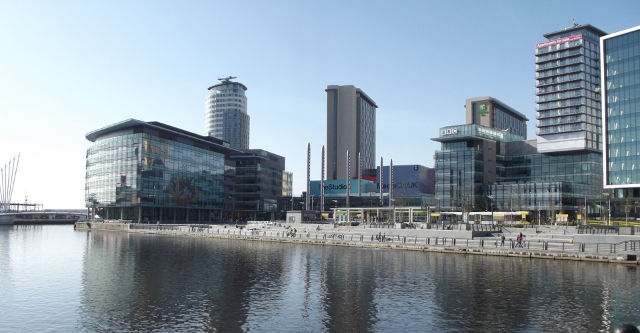
I wonder how much of my life will remain in the Tomorrow of 450 years in the future, and how bemused my descendants will be if they ever read this.
If you have been, thank you for reading this. Especially if it’s 450 years in the future.
Image: Public Domain
Image: © Jonathan Dodd
Image: N Chadwick under CC BY 2.0
Image: © Jonathan Dodd
Image: ell-r-brown under CC BY 2.0
Image: © Jonathan Dodd
Image: Mary Rose Trust under CC BY 2.0
Image: Darren Lewis under CC BY 2.0

